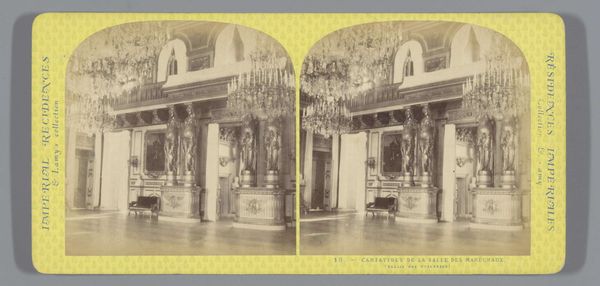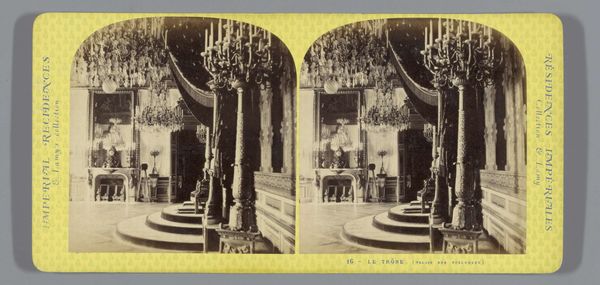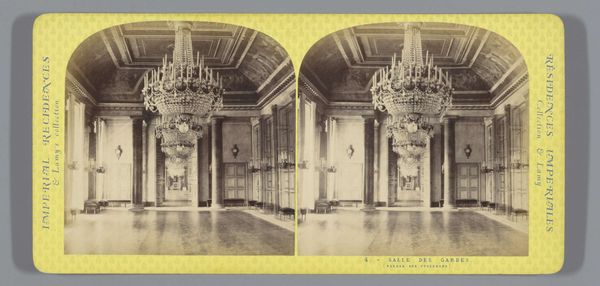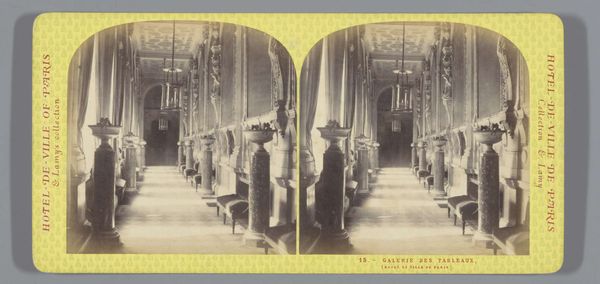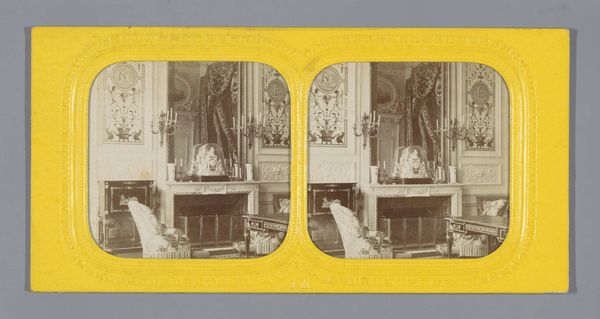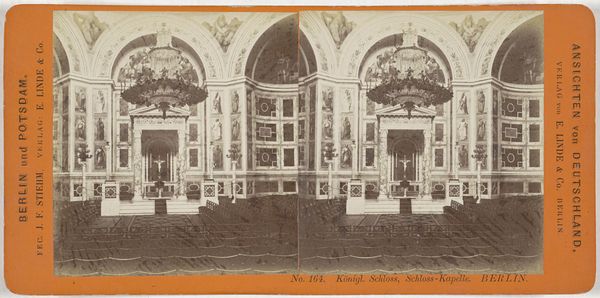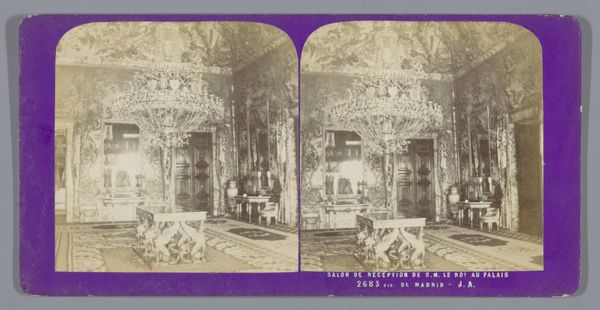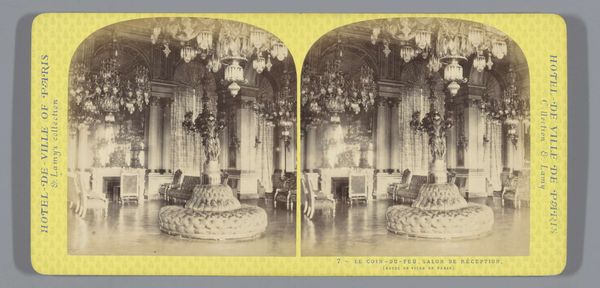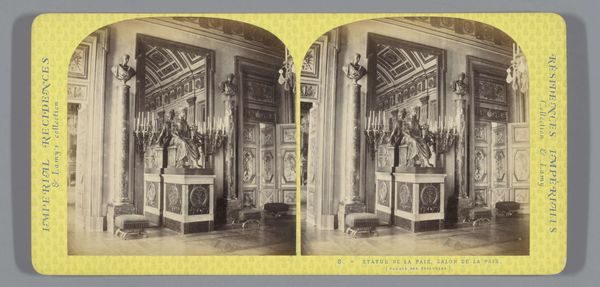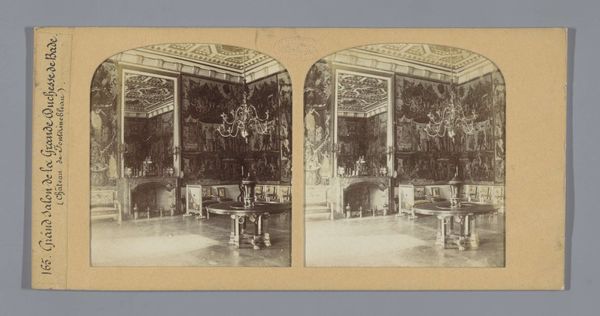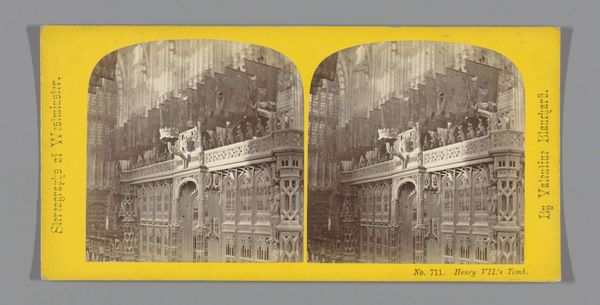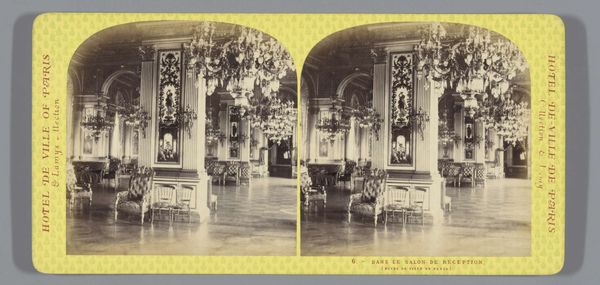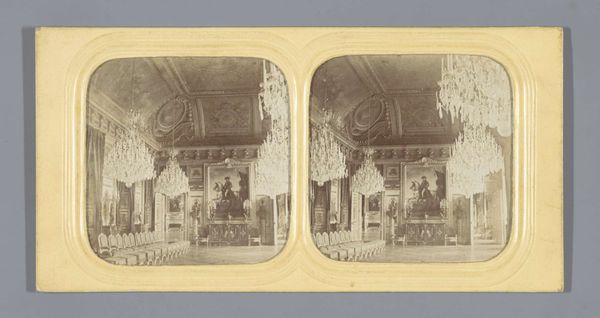
print, photography, gelatin-silver-print, albumen-print
# print
#
photography
#
gelatin-silver-print
#
cityscape
#
genre-painting
#
albumen-print
Dimensions: height 85 mm, width 170 mm
Copyright: Rijks Museum: Open Domain
Curator: What a stately room. I am intrigued by this stereo photograph from sometime between 1860 and 1880 by Ernest Eléonor Pierre Lamy; it’s called "Interior of a Salon in the City Hall of Paris." Editor: It does feel grand. But also... deserted. Those solitary chairs and dark columns stretching into the distance make the whole scene feel oddly imposing. Almost a theatrical set, but with no players. Curator: Exactly! I find myself considering the albumen print and gelatin silver print mediums themselves. Think about the laborious process—the meticulous coating, exposure, and development to capture such an enormous interior with such striking detail, for it to then be circulated in a relatively mass-produced stereoscopic form, meant to simulate depth and make it a near 'realistic' view for popular consumption. Editor: And look how the choice to focus on this salon space, likely used for civic receptions and balls, presents the Second Empire’s vision of itself: confident, powerful, projecting its cultural values. But I keep returning to those empty chairs. Were these staged? Or is it an inadvertent commentary on the political realities? Curator: The staging versus reality question is an important one. Remember the context. This photograph would have been created after the major renovations in Paris were being designed by Haussmann. The physical space itself embodied state power and control. So Lamy's choices would certainly have involved some careful considerations. And remember too, that such images served to shape the public's imagination and support these urban transformations. Editor: Good point, framing and circulating visual ideas and ideologies…The material object—this stereoscopic card—is not just a picture, but a tool. Curator: Precisely, the photographers were also entrepreneurs. The very act of distributing these prints, using advanced photographic processes, demonstrates a desire to propagate a vision. It’s an interesting tension between technological advancement, the artistic intention, and political function. Editor: Seeing it that way, it transforms from a beautiful room into a document about the power of constructed environments, captured and commodified for wider audiences. Curator: Agreed. I find this deeper material reading enriches our perception. Thank you. Editor: Likewise, a look at its public purpose helps frame a richer discussion.
Comments
No comments
Be the first to comment and join the conversation on the ultimate creative platform.
